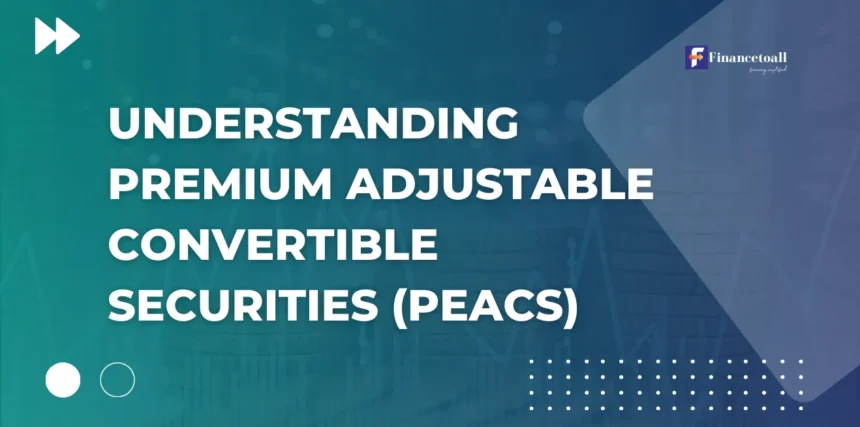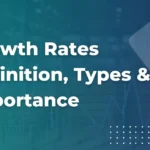Premium Adjustable Convertible Securities (PEACS) represent a sophisticated financial innovation, blending elements of both equity and debt securities into one instrument. These hybrid securities, such as convertible notes, allow investors to benefit from both capital appreciation through conversion into common stock and income generation via coupon payments akin to traditional bondholders. The flexible nature of PEACS, particularly their adjustable terms, makes them a valuable investment tool for convertible investors in the current financial landscape.
Basics of Convertible Securities
To fully appreciate PEACS, it’s important to understand the foundation of convertible securities and equity investment. At their core, convertibles are bonds or preferred stocks that can be converted into a predetermined number of shares of the issuing company’s stock. Convertible securities offer the potential for capital gains while still providing regular income through interest payments or dividends.
There are various types of convertible securities, including:
- Convertible Bonds: Debt instruments that give holders the right to convert them into equity at a specific price.
- Convertible Preferred Stock: Equity securities that offer fixed dividends and the option to convert into common stock.
- Contingent Convertibles (CoCos): Hybrid securities typically used by banks, which convert into equity or are written off under certain conditions.
PEACS fall within the broad category of convertible securities but bring additional flexibility and adaptability, particularly due to their adjustable terms and premium structure.
Key Takeaways
Structure of PEACS
PEACS offer a distinct structure that combines several characteristics of convertible bonds, equities, and income securities. The following components define their structure:
- Convertible Nature: Like traditional convertible bonds, PEACS include a conversion feature that allows investors to convert their holdings into the issuing company’s common stock. However, unlike traditional convertible bonds, the conversion ratio in PEACS may be subject to adjustments, providing opportunities to benefit from favorable stock price movements.
- Adjustable Terms: A key feature that differentiates PEACS from traditional convertibles is the adjustable nature of their terms. Interest rates, conversion ratios, and other conditions can be adjusted based on market conditions or predefined triggers, making PEACS more flexible than fixed-term convertible bonds.
- Premium Pricing: The “premium” in PEACS refers to the price at which they are issued, which is typically higher than the face value of the bond. This premium reflects the additional value derived from the security’s convertibility and adjustability features. It also allows the issuer to raise more capital upfront.
- Hybrid Instrument: PEACS are categorized as hybrid securities because they offer features of both debt and equity securities. The coupon payments provide a steady income stream, while the option to convert into stock provides upside potential.
Differences from Traditional Convertible Bonds
Traditional convertible bonds offer a fixed conversion ratio and a fixed interest rate, making them relatively straightforward compared to PEACS. In contrast, PEACS feature adjustable conversion ratios and interest rates, providing flexibility to adapt to market conditions. This makes PEACS more suitable for volatile market environments where flexibility is crucial.
For example, traditional convertibles offer a set conversion premium (the difference between the conversion price and the stock price at the time of issue). In PEACS, this premium can adjust over time, depending on the stock’s performance, giving investors the potential for greater returns if market conditions improve.
The adjustable feature also affects how PEACS behave in relation to market interest rates. In a rising interest rate environment, traditional convertibles may lose value, while PEACS have the potential to adjust their interest rate upwards, offering some protection against this risk. This difference highlights why convertible bond managers often prefer PEACS during periods of interest rate volatility.
Advantages of Investing in PEACS
PEACS offer several advantages for convertible bondholders and other investors looking to balance income with growth potential:
- Capital Appreciation: The option to convert PEACS into equity at a favorable rate offers convertible bond investors the potential for significant capital gains, particularly if the company’s stock price rises sharply. This feature allows investors to participate in the upside potential of equity markets while still enjoying the security of fixed income.
- Income Generation: Like traditional income securities, PEACS provide regular coupon payments, which can serve as a reliable source of income. This makes them attractive to income-focused investors seeking exposure to convertible markets without sacrificing the possibility of equity returns.
- Adjustable Terms: The flexibility of PEACS allows investors to adjust their terms in response to changing market conditions, providing protection against interest rate risk and other market fluctuations.
- Diversification: By offering exposure to both debt and equity, PEACS can enhance a portfolio’s diversification. This makes them a useful tool in both growth and income portfolios.
- Protection Against Dilution: Many PEACS include anti-dilution provisions that protect investors if the company issues additional shares. These provisions adjust the conversion ratio to ensure that the value of the convertible security is not diminished by new share issuance.
Disadvantages of PEACS Investments
While PEACS offer several benefits, they also carry inherent risks and complexities that potential investors should consider:
- Complexity: PEACS are far more complex than traditional convertible bonds or straight bonds. Understanding their adjustable features, premium pricing, and conversion mechanics requires careful analysis. For novice investors, this complexity can be daunting, which is why PEACS are often recommended only to experienced or risk-tolerant investors.
- Equity Dilution: If the issuing company converts PEACS into stock, existing shareholders could face equity dilution, reducing the value of their holdings. This is particularly true if the conversion occurs at a time when the company’s stock is underperforming.
- Interest Rate Risk: Although the adjustable features of PEACS can offer protection against rising interest rates, they also expose investors to the risk of lower returns if interest rates fall. In this scenario, the adjustable interest rate feature may cause coupon payments to decrease, potentially reducing the overall income generated from the investment.
- Credit Risk: Like all debt securities, PEACS carry the risk that the issuer may default on its obligations. Investors must carefully assess the creditworthiness of the issuing company before investing in PEACS, particularly if they are issued by companies in volatile sectors such as technology or biotechnology.
- Convertible Bond Price Volatility: PEACS, like other convertible bonds, are subject to price fluctuations in the bond market. The value of PEACS can be affected by changes in interest rates, stock price volatility, and the creditworthiness of the issuer.
Evaluating PEACS for Investors
When evaluating PEACS, investors should consider several factors:
- Income Potential: PEACS provide regular coupon payments, making them attractive to income-seeking investors. However, the adjustable nature of PEACS means that this income can fluctuate based on interest rate movements, so it’s essential to assess how well the PEACS’ structure aligns with your income needs.
- Growth Potential: Investors must weigh the potential for capital appreciation through conversion into common stock. The conversion premium plays a critical role in determining how attractive the conversion option is, so understanding the company’s growth prospects is crucial.
- Creditworthiness of the Issuer: As with all debt securities, the credit risk of the issuer is a key consideration. Investors should evaluate the financial health of the issuing company, especially if they operate in sectors prone to volatility or high debt levels.
- Portfolio Diversification: PEACS can offer valuable diversification by blending fixed income and equity-like features. This makes them suitable for investors looking to balance risk across their portfolios.
- Market Conditions: PEACS tend to perform better in environments of rising stock prices and stable or falling interest rates. Therefore, understanding the macroeconomic outlook is essential when evaluating PEACS.
Historical Performance of PEACS
Historically, PEACS have delivered strong performance during periods of rising stock prices and stable interest rates. In the early 2000s, several large technology companies issued PEACS as a way to raise capital while offering favorable terms to investors. These issuances provided investors with both income and capital appreciation, particularly as the technology sector experienced significant growth during that time.
In the aftermath of the 2008 financial crisis, PEACS also gained popularity as companies sought flexible financing options to navigate volatile markets. During this period, many investors turned to PEACS for their adjustable features, which helped protect them from downside risk while still offering the potential for equity-like returns.
Market Conditions Impacting PEACS
PEACS are highly sensitive to broader market conditions, particularly interest rates and stock price movements. In environments of rising stock prices, PEACS tend to perform well, as investors have the option to convert their holdings into common stock and benefit from capital appreciation.
Conversely, when interest rates rise, the value of PEACS can decline, particularly if their adjustable interest rate features lag behind market movements. However, the flexibility of PEACS often allows them to adjust to these changes, mitigating some of the risks associated with rising rates.
Additionally, market volatility can impact the performance of PEACS. In volatile markets, investors may be reluctant to convert their PEACS into stock, preferring instead to hold onto their debt securities for the stability they provide.
Role of PEACS in Portfolios
PEACS can play an important role in a variety of portfolio strategies:
- Income Portfolios: For investors seeking income, PEACS provide a steady stream of coupon payments, similar to traditional high-yield debt securities. Their adjustable interest rates also provide some protection against inflation, making them attractive to income-focused investors.
- Growth Portfolios: In growth portfolios, PEACS offer the potential for capital appreciation through conversion into common stock. Their hybrid nature allows investors to participate in the upside of equity markets while still enjoying the security of fixed income.
- Balanced Portfolios: For those seeking a balance between growth and income, PEACS offer an attractive middle ground. They provide the potential for capital gains while still offering a regular income stream, making them ideal for diversified portfolios.
Convertible Securities Market Overview
The convertible securities market has a long history, dating back to the late 1800s when railroads used convertible bonds to raise capital. Since then, convertibles have evolved into a major asset class, with issuances across various industries including technology, healthcare, and financial services.
Key drivers of the convertible market issuance include:
- Low Interest Rates: When interest rates are low, companies are more likely to issue convertible bonds and PEACS as a way to raise capital without paying high coupon rates.
- Stock Price Volatility: Convertible securities become more attractive in volatile stock markets because they offer the potential for upside without the full risk of equity exposure.
- Corporate Financing: Many companies use convertibles as a tool for financing growth, particularly in sectors like technology and biotechnology. These industries often experience rapid expansion, and convertibles provide the flexibility needed to raise capital while preserving cash flow.
Convertible Bond Market Characteristics
The convertible bond market is defined by its unique combination of bond-like and equity-like characteristics. This hybrid nature makes convertibles attractive to both conservative and aggressive investors.
Characteristics of the convertible bond market include:
- Conversion Premiums: This refers to the difference between the stock price and the conversion price. A lower conversion premium makes the bond more attractive to investors, as it increases the likelihood of conversion into common stock.
- Interest Rates: The interest rates on convertible bonds are typically lower than those of traditional bonds, reflecting the potential for capital gains through conversion.
- Market Volatility: Convertibles tend to perform well in volatile markets, as they offer the potential for equity-like returns while still providing downside protection through their bond characteristics.
Performance Trends in Convertible Markets
Performance in the convertible markets has been influenced by several key trends over the past few decades:
- Rising Stock Prices: During periods of rising stock prices, convertibles tend to outperform traditional bonds, as investors exercise their conversion options to benefit from capital gains.
- Low Interest Rates: In low interest rate environments, convertibles have become a popular financing tool for companies looking to raise capital at a lower cost.
- Increased Issuance in Growth Sectors: The technology and biotechnology sectors have been major issuers of convertibles in recent years, as companies in these sectors often require large amounts of capital to finance growth and expansion.
Convertible Issuance and Financing
Companies issue convertibles for a variety of reasons, including:
- Lower Cost of Capital: By issuing convertibles, companies can raise capital without paying the higher interest rates associated with traditional bonds.
- Flexibility: Convertibles provide companies with flexibility in managing their balance sheets. For example, they can convert debt into equity if their stock price rises, reducing their debt burden.
- Investor Demand: The demand for convertible bonds and PEACS has been strong in recent years, particularly in growth sectors such as technology and healthcare.
Convertible Valuation and Pricing
Valuing convertible securities requires an understanding of both bond and equity market dynamics. Several factors influence the pricing of convertibles, including:
- Conversion Premium: The difference between the stock price and the conversion price plays a critical role in determining the value of a convertible security. A lower conversion premium increases the likelihood that the bond will be converted into stock, enhancing its value.
- Interest Rates: The value of convertibles is sensitive to changes in interest rates. Rising rates can reduce the value of the bond component, while falling rates can increase it.
- Stock Price Volatility: Volatility in the stock market can affect the value of convertibles. In volatile markets, the potential for capital gains increases, making convertibles more attractive to investors.
Convertible Arbitrage Strategies
Convertible arbitrage is a popular investment strategy that involves buying a convertible security and simultaneously shorting the underlying stock. This strategy allows investors to profit from discrepancies between the convertible’s price and the stock’s price.
Arbitrage strategies can be particularly effective with PEACS, as their adjustable features create opportunities to capitalize on market inefficiencies.
Regulatory and Tax Considerations
PEACS, like all convertible securities, are subject to regulatory oversight by financial authorities, such as the Securities and Exchange Commission (SEC) in the United States. The tax treatment of PEACS varies depending on the nature of the security and the investor’s jurisdiction.
Tax Considerations:
- Interest Payments: The interest payments from PEACS are typically taxed as ordinary income.
- Capital Gains: If PEACS are converted into stock and sold at a profit, the gains may be subject to capital gains tax.
- Dividend Payments: In some cases, PEACS may pay dividends instead of interest, which can be taxed differently depending on the investor’s tax bracket.
Future Outlook for PEACS and Convertible Markets
The future outlook for PEACS and the broader convertible bond market is positive, driven by several factors:
- Rising Demand for Hybrid Securities: As investors continue to seek out hybrid securities that offer both income and growth potential, the demand for PEACS is expected to increase.
- Increased Issuance: Companies in high-growth sectors, such as technology and biotechnology, are likely to continue issuing PEACS as a way to raise capital without taking on excessive debt.
- Market Volatility: In an increasingly volatile market environment, PEACS offer investors a way to hedge against downside risk while still participating in the upside potential of the stock market.
Conclusion
Premium Adjustable Convertible Securities (PEACS) offer a unique investment opportunity for those seeking both income and growth. With their adjustable terms, conversion options, and hybrid characteristics, PEACS provide a valuable tool for investors looking to diversify their portfolios and hedge against market volatility.
Frequently Asked Questions on PEACS
Q.1 What are Premium Adjustable Convertible Securities?
Premium Adjustable Convertible Securities (PEACS) are hybrid financial instruments that offer the holder the option to convert into a predetermined number of common shares at a specified price. They often provide a fixed income stream with additional upside potential through conversion features.
Q.2 How do PEACS differ from Traditional Convertibles?
PEACS typically include an adjustable conversion price, allowing investors to benefit from potential stock price appreciation. In contrast, traditional convertibles have a fixed conversion price. This adjustable feature in PEACS can help investors manage risk and optimize returns in varying market conditions.
Q.3 What are the Advantages of Investing in PEACS?
Investing in PEACS can offer investors a unique combination of fixed income benefits and equity participation. These securities can provide diversification, downside protection through their fixed-income component, and potential capital appreciation if the underlying stock performs well.
Q.4 What Disadvantages should Investors consider with PEACS?
While PEACS offer attractive features, they also come with certain risks. Investors should be aware of factors such as credit risk, interest rate sensitivity, and the potential dilution of ownership that may occur upon conversion. Market volatility can impact the value of these securities.
Q.5 How can Investors Evaluate the Investment Potential of PEACS?
To evaluate PEACS, investors should consider factors like the issuer’s credit rating, conversion terms, market conditions, and the company’s growth prospects. Conducting thorough research, analyzing historical performance data, and understanding how these securities fit within a diversified portfolio are crucial steps in assessing their investment potential.








